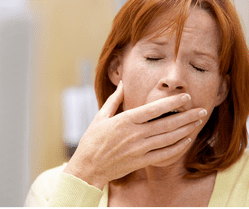States Saying 'Good-bye' to Daylight Saving Time

Daylight Saving Time (DST) in the U.S. begins each year on the second Sunday in March when clocks are set forward by one hour during summer months so that sunrise and sunset are later each day according to the clock. They are turned back again to Standard Time on the first Sunday in November, as DST ends and we return to Greenwich Mean Time (GMT).
“Spring forward, Fall back.”
The current implementation of daylight saving time is to set clocks forward by one hour in the spring ("spring forward") and set clocks back by one hour in autumn ("fall back") to return to Greenwich Mean Time (GMT). In other words, there is one 23-hour day in early spring and one 25-hour day in the autumn. In 2021, the day that we turn the clocks back is November 7, 2021.
Many state legislatures have an ongoing struggle with the decision to continue the biannual changing of the clocks or get rid of it all together. Most U.S. states have considered legislation over the last several years that would place the state permanently on either Standard Time or Daylight Saving Time. In the past 6 years, at least 350 bills and resolutions have been introduced in almost every state, but none of significance passed until 2018, when Florida became the first state to enact legislation to permanently observe DST, pending amendment of federal law to permit such action.
In the last four years, 19 states have enacted legislation or passed resolutions to provide for year-round Daylight Saving Time, if Congress were to allow such a change, and in some cases, if surrounding states enact the same legislation. Because federal law does not currently allow full-Time DST, Congress would have to act before states could adopt changes. The 19 states are:
- Alabama, Georgia, Minnesota, Mississippi, and
- Montana (2021).
- Georgia (resolution), Idaho, Louisiana, Ohio, South Carolina, Utah, and Wyoming (2020).
- Arkansas, Delaware, Maine, Oregon, Tennessee, and Washington (2019).
- Florida (2018; California voters also authorized such a change that year, but legislative action is pending)…
…and now, the Pennsylvania House of Representatives passed legislation urging Congress to do end the ritual and make Daylight Saving Time permanent. But will it pass in the PA State Senate?
WHOSE 'BRIGHT' IDEA WAS IT?
The concept of creating more hours of daylight was first ‘proposed’ by Benjamin Franklin in 1784 as a way to conserve candles and lamp oil in Paris. (Benjamin Franklin & Aldridge, 1956) He wrote a letter to the editor of The Journal of Paris suggesting that starting the day earlier in the summer would reduce candle and lamp oil usage. He formulated some extreme ideas to enforce the change by Parisians, including taxes placed on homes for having shutters that would keep out natural sunlight, guards placed outside of candle wax stores to control weekly purchases by residents, guards on patrol to prevent horse-driven coaches from being on the streets after sunset, and city-wide churches to ring their bells at sunset or even cannons to be set off to ‘wake the sluggards’. His famous quote was “Early to bed, early to rise, makes a man healthy wealthy, and wise.” Though that may be true, his proposal didn’t catch on!
Daylight Saving Time was also recommended in 189 by New Zealand entomologist and astronomer George Hudson (Pavlus, 2010) who wanted to change the clocks back two hours every spring so that he could have more daylight hours to devote to collecting and examining insects. That didn’t stick either!
William Willett, an English builder advocated for Daylight Saving Time (DST) in the United Kingdom in 1907. He published a pamphlet called The Waste of Daylight, campaigning to advance clocks at the beginning of the spring and summer months and to return to GMT in the autumn. He wanted to encourage people to get out of bed earlier in summer.
The concept of Daylight Saving Time finally was instituted in the U.S. during World War I in order to save energy for war production by taking advantage of the later hours of daylight between April and October. Then, the passage of the Energy Policy Act in 2005 extended Daylight Saving Time by four weeks — from the second Sunday of March to the first Sunday of November.
WILL PENNSYLVANIA REMAIN ON DAYLIGHT SAVING TIME?
According to an online article at PennLive.com, the Pennsylvania House of Representatives passed legislation on April 5, 2021, urging Congress to do away with the semi-annual clock-changing ritual and allow states to remain on Daylight Saving Time permanently. Making the change would mean on Dec. 21 sunrise in Philadelphia would be at 8:19 a.m. and 8:39 a.m. in Pittsburgh.
Rep. Ryan Mackenzie, R-Lehigh County, who sponsored the bill, said studies show that staying on Daylight Saving Time will save energy, reduce traffic crashes, reduce crime, and lead to healthier lifestyles.
However, Rep. Russ Diamond, R-Lebanon County wrote his own bill that would end changing the clocks twice a year, but it would keep Pennsylvania on standard time; a change the federal government allows states to make on their own. Representative Diamond states that one reason he prefers making standard time permanent is that Daylight Saving Time would leave school children in the dark during the winter months when they are walking to school or waiting for the bus.

WHAT ARE THE DRAWBACKS OF CHANGING THE CLOCK ONE HOUR?
Changing back and forth from Daylight Saving Time to Standard Time can easily throw off your sleep cycle, or your circadian rhythm. Your circadian rhythm is your body's natural cycle, which is comprised of the physical, mental, and behavioral changes that exist in a 24-hour period of time. A disruption in this rhythm like Daylight Saving, even if it’s a mere 60 minutes, can have a significant, negative effect on your body’s biological clock.
The National Sleep Foundation recommends that adults try to get an average of eight hours of sleep per night and that making sleep a priority can have long-term effects on quality of life. The ideal amount of sleep can vary from person to person, so they emphasize that it’s important to understand what your needs are based on individual behavior, like your activity level and overall health.
According to the author Matthew Walker, Ph.D., in his New York Times bestseller “Why We Sleep”, routinely sleeping less than six or seven hours a night has a direct and adverse effect on your overall health. Destructive results from an altered sleep pattern include:
- Destroys your immune system
- More than doubles your risk of cancer
- Disrupts blood sugar levels
- Causes hormonal imbalance
- Increases the chance of cardiovascular disease, congestive heart failure, and stroke
- May lead to psychiatric conditions such as depression, anxiety, and suicidality
- Can cause weight gain
- Decreases life span
That’s an incredible amount of damage that can be done to the human body and mind. The earlier you can pinpoint and change bad sleep habits, the greater effect it can have in altering your well-being and life expectancy.
WHAT ARE THE BENEFITS OF REMAINING ON DAYLIGHT SAVING TIME?
Studies have shown that Daylight Saving Time promotes safety because the longer daylight hours make driving safer, lowers car accident rates, and lowers the risk of pedestrians being hit by a car. According to Economists Jennifer Doleac, Ph.D., and Nicholas Sanders, Ph.D., robberies drop about 7% overall, and 27% in the evening hours after the springtime change. More ambient light during typical high-crime hours makes it easier for victims and passers-by to see potential threats and later identify wrongdoers.”
Other benefits include:
- Less car crashes
- Fewer pedestrians struck by vehicles
- Decrease in crime, especially robberies/burglaries
- Safer for joggers, people walking dogs, children playing outside
- More people shopping after work, increasing retail sales
- More people driving, increasing gas sales
- More time to play golf and other outdoor sports
- People spend more time outside in general
- Less need for electricity (lower power bills)

U.S. Senator Marco Rubio of Florida is a proponent for ending the switch back to DST. In March 2019, Rubio introduced a bill called The Sunshine Protection Act, which intends to make DST permanent and turn it into a year-round standard time.
"Studies have shown many benefits of a year-round daylight saving time, which is why multiple states have followed Florida's lead in voting to make it permanent," Rubio said at the time. "I will not let daylight fade on my Sunshine Protection Act."
GENERAL SUGGESTIONS FOR HEALTHY SLEEP HABITS
The American Academy of Sleep Medicine has its own recommendation and agrees that the U.S. should eliminate seasonal time changes in favor of a national, fixed, year-round time. According to AASM, current evidence best supports the adoption of year-round standard time, which aligns best with human circadian biology and provides distinct benefits for public health and safety.
Regardless, most doctors recommend that people take the necessary steps to train their bodies for better sleep. This consistency is what leads to having predictable bedtime times and wake times that promote good health
Some simple healthy sleep habits include:
- Establish a bedtime routine. Be consistent with your sleep schedule to help regulate your body's internal clock.
- Avoid highly stimulating activities before bed (screen time). Focus on a relaxing activity like listening to music or reading a book.
- Eliminate caffeine and heavy meals late in the day.
- Avoid naps if you have trouble with sleeping. If you must nap, take one earlier in the day.
- Daily exercise to help reduce stress and anxiety.
- Avoid alcohol before bed. Alcohol can induce a state of relaxation and drowsiness and reduce the time it takes to fall asleep. However, research shows that alcohol has a profound effect on sleep and sleep quality.
While we may not, YET, be able to change the fact the switch to Daylight Saving Time occurs, healthy sleep habits are essential to a longer life. At Pittsburgh Dental Sleep Medicine, our experienced Sleep Dentists specialize in helping to prevent disruptive sleep. Our doctors are uniquely trained to help find solutions for those who experience abnormal daytime fatigue and sleepless nights due. If you find you are experiencing difficulty sleeping or have poor health issues due to a sleep disorder, learn more about how we may be able to help at https://www.pittsburghdentalsleepmedicine.com/services.
SOURCES:
Benjamin Franklin, w. a., & Aldridge, A. (1956). Franklin's essay on daylight saving. American Literature, 28(1), 511–513,23–29. Retrieved 10 7, 2021
Pavlus, J. (2010). Daylight savings time. Scientific American, 303(3), 69-69. Retrieved 10 7, 2021, from https://dialnet.unirioja.es/servlet/articulo?codigo=6783680&info=resumen&idioma=eng
“Why We Sleep”: https://www.amazon.com/Why-We-Sleep-Unlocking-Dreams/dp/1501144316
AASM: https://jcsm.aasm.org/doi/10.5664/jcsm.8780
https://www.procon.org/headlines/top-3-pros-and-cons-of-daylight-saving-time/#30

